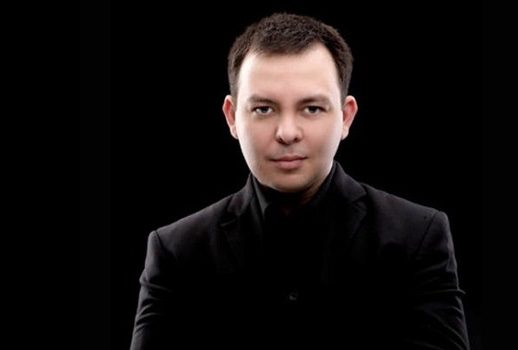

Surprising Michal Czerniawski.
A small-scale concert performance of Handel’s Amadigi di Gaula by the Opera Settecento orchestra last Saturday night at St. George—Handel’s own parish church—fit perfectly into the venue, thanks to Leo Duarte‘s expansive conducting and a strong cast.
In baroque opera, with sparse dynamics and articulation marks written on the score, the approach taken by the conductor and orchestra own personality can make a huge difference. This time dynamics were somewhere in between the rigid and dry English HIP tradition (The English Concert, Academy of Ancient Music) and the more radical contrasts heard from the new “Mediterranean” school (Ensemble Matheus, Accademia Bizantina). Varying balances between sections depending on the aria helped to enrich the orchestral sound with a variety of colors.
It’s fun to guess from a conductor’s movements which kind of instrument they used to play: harpsichordists tend to focus on marking the beat, violinists play more with distinguishing articulations and woodwind players work more on the dynamics. Duarte is an oboist and his expressive movements intended to bring out from the orchestra nuanced attacks and flexible endings, resulting in very rich phrasing.
Amadigi di Gaula is a rare opera among those written by Handel, featuring only four characters (plus a tiny role for the deus-ex-machina ending) and all of them are high voices. The character development through the arias as well is unusual.
Even if this was a concert performance, with no scenic movements, there was a lot of acting from the singers (plus some RuPaul inspired make-up). Recitatives were full of inflections and nuances that enlivened the drama. The rich continuo and the “gapless” attack contributed a lot to keep the drama flowing as a whole.
Following the libretto in the 1715 facsimile edition was delightful. I enjoyed a lot having the translation of the recitatives but only a description of what the character was singing in the arias (“He invokes the Night, to assist and comfort his troubled Breast, and stops abruptly”), so we could focus on the singing.
Michal Czerniawski in the title role of Amadigi was a very nice surprise. (Whatever you do, don’t go looking for his three or four years old YouTube videos. I can tell you that they don’t do justice to him.) He has a beautiful homogeneous tone and a solid technique for addressing florid music. He was an ideal and noble hero. His superb breath control created an impressive “O rendentemi il mio bene” ending the first act, with Duarte coaxing a touching and effective timbre from the orchestra.
The sorceress Melissa was sung by Erica Eloff. Her “villainess” portrayal via expressive accents in the singing line depicted strikingly the kind of bi-polar madness of those who love and hate at the same time. The high notes ending “Desterò dall’empia dite” were spectacular, forming an effective finale for the second act.
The mezzo Maria Ostroukhova had the trickiest role: Dardano, the hero companion/rival. Her performance recovered from an undersung first couple of arias to land a sweet and colorful “Penna tiranna,” probably the opera most famous aria.
Ilona Revolskaya, the lover Oriana, stole my heart since the beginning, keeping me waiting for her next aria. She has a pure and rich voice with a superb singing line. She intelligently used her warm tone and variations in the da capo sections to highlight the varying moods: love, deception and sorrow. Her phrasing was excellent depicting her dramatic intentions, as in the recitativo before the lament aria “S’estinto è l’idol mio”, full of uncertainty that expands almost into a cry.
She projected nicely her silvery high notes, filling all the space and was very good as well narrowing down the sound to achieve very effective pianissimi. I am quite sure she will grow into a great Mozartian in coming years, singing Suzanna, Zerlina or even Donna Elvira.
Da capo variations are critical in baroque opera to avoid boredom, to showcase singer abilities and to expand the dramatic sense. Here they were perfectly balanced, maintaining stylistic unity and contributing to character development, meanwhile allowing the singers to indulge in a wild moment or two. We even had variations on the woodwind in “Dolce vita del mio petto” alongside those in the vocal line, something not heard very often.
As usual in Handel operas, there are few ensemble numbers. The first duetto, “Crudel tu non farai,” started shakily, gaining confidence in the reprise. Better was the love duet “Cangia alfine,” with perfect chemistry between the artists. The final chorus with the pastorale was an ideal ending, full of energy, with Duarte himself playing the tambourine.
This was a wonderfully enjoyable opera night, obviously the product of passion and hard work—a good example, in fact, of how small-scale projects can outshine others with much more budget and media attention like the recent Rinaldo at the Barbican.

























Comments